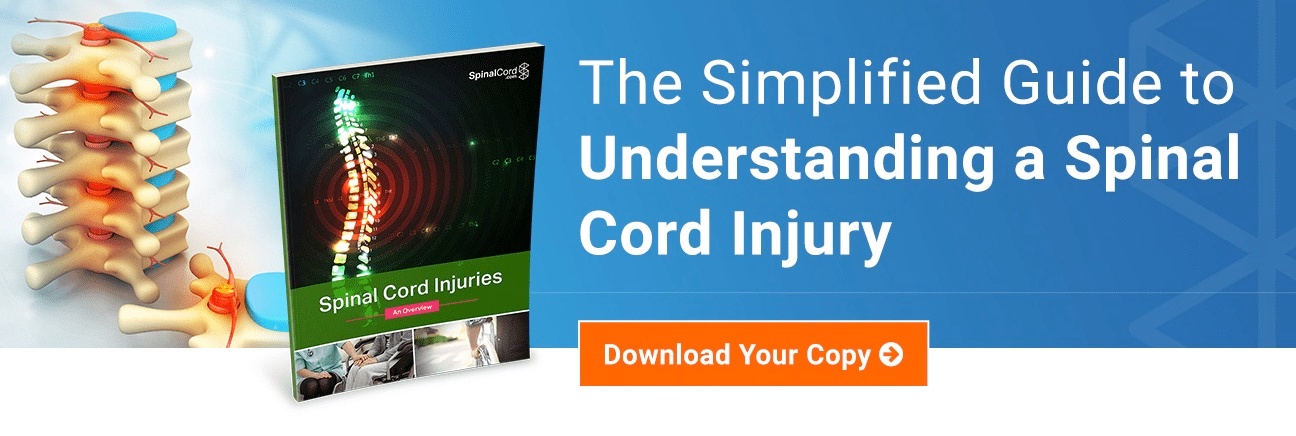What Are the Most Common Types of Spinal Cord Injuries?
When it comes to the types of spinal cord injuries (SCIs) that a person can sustain, there is a wide range of injuries and level of severity to consider. Any spinal cord injury is one that causes damage to the spinal cord, thereby impeding the transmissions of information between the brain and the rest of the body.
Spinal cord injuries are commonly broken down into two main categories: incomplete and complete spinal cord injuries. A spinal cord injury accident can result in different types of spinal cord injuries that range in severity, albeit a complete injury is commonly more devastating than an incomplete CSI.
Incomplete and Complete Spinal Cord Injury Types
Incomplete Spinal Cord Injuries
According to the National Spinal Cord Injury Statistical Center (NSCISC), the two most common types of spinal cord injuries are incomplete tetraplegia and paraplegia, with incomplete spinal cord injuries accounting for more than 65% of all SCIs.
An incomplete spinal cord injury is one that partially impedes the spinal cord and can be caused by a spinal cord contusion (bruising), a partial severance of the spinal cord, stretching, having something pressing against the spinal cord, or even having bone fragments or foreign bodies embedded or otherwise affecting it. These types of incomplete spinal cord injuries result in lessened sensory or motor functions below the injury site on the spinal cord. However, SCI survivors with these types of spinal cord injuries may recover some function over time depending on their health and medical history.
Tetraplegia, also commonly known as quadriplegia, is an injury that affects all four limbs in addition to the torso. This type of injury typically occurs from high-level damage that affects the cervical spinal cord (the sections of which are known as C1-C7 to match up to the corresponding segments of the vertebral spine). Paraplegia, also known as partial paralysis, is that which commonly affects function in the lower extremities.
Complete Spinal Cord Injuries
A complete spinal cord injury is that which causes permanent damage to the affected area of the spinal cord. Complete types of spinal cord injuries are indicated by a complete lack of motor and sensory functions below the injury locations on the spinal cord.
Thankfully, complete tetraplegia and paraplegia account for less than 35% of spinal cord injuries — and, as medical advances, treatment, and research continue to improve, this number continues to drop.
Grades of Spinal Cord Injuries
According to the International Standards for Neurological Classification of Spinal Cord Injury (ISNCSCI) from the American Spinal Injury Association, different types of spinal cord injuries are graded on a scale ranging from A to E. Each level corresponds with varying grades of spinal cord impairment.
Grade “A” indicates an SCI is complete with a lack of sensory or motor functions in sacral spinal cord segments S4-S5. Grade “E” indicates that sensory and motor functions are normal, meaning that a person may have suffered an SCI, but they do not experience a loss of sensation or motor functions. However, it may indicate that there are neurological or muscular deficits or changes.
Most Commonly Affected Regions of the Spinal Cord
According to Johns Hopkins Medicine, these different types of spinal cord injuries most commonly affect the cervical and thoracic regions of the spinal cord. These are the top and second highest levels of the spinal cord, starting at the base of the skull (C1-C7) and spanning down to the mid-back (T1-T12).
How the Most Common Types Spinal Cord Injuries Occur
In the previously cited statistics, the NSCISC reports that the most common cause of a spinal cord injury accident is that involving a vehicle. Since 2010, automobile accidents constitute 38% of all spinal cord injuries, followed by falls (30%), acts of violence (14%), sports-related incidents (9%), medical issues (5%).
SpinalCord.com was created by spinal cord injury law firm Swope, Rodante P.A. with the hope of creating an online information resource and community for spinal cord injury survivors and their families. It is our goal to connect people who are dealing with similar issues to help them grow together, support one another, and realize that they are not alone.
To learn more about spinal cord injuries, be sure to check out our complimentary resource by clicking on the link below.
Stay Updated on Advancements On Traumatic Brain &
Spinal Cord Injuries
About the Author





